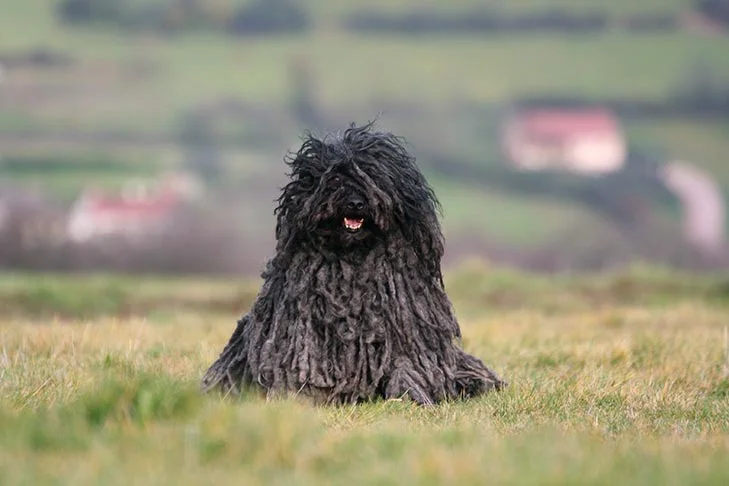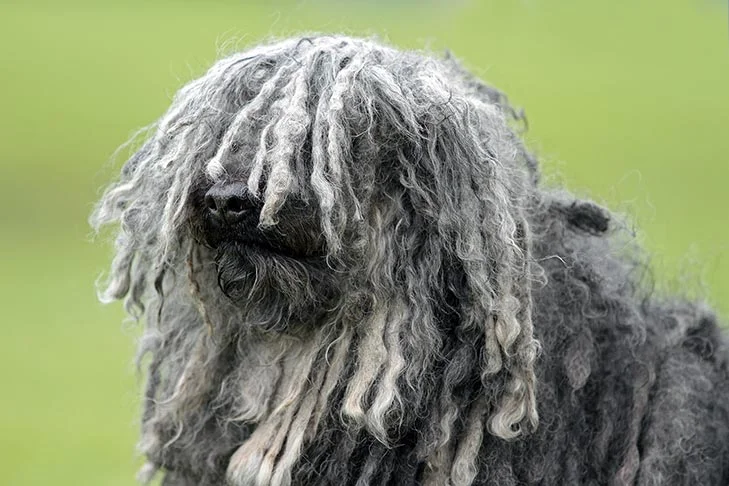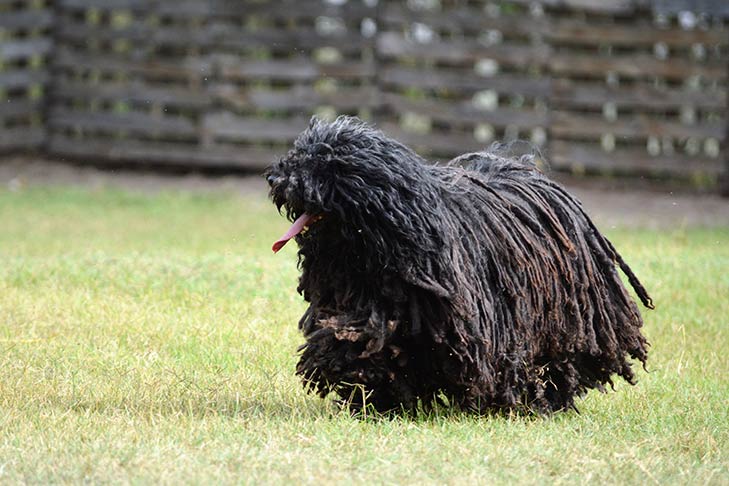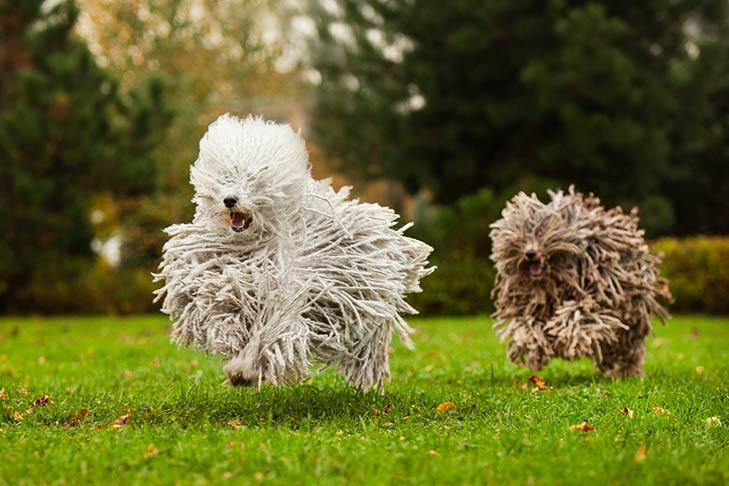The Puli is a small but powerful herding breed that is completely coated with thick, naturally occurring cords from head to tail. No other breed can be fooled for them. These nimble and devoted little dynamos were raised to work closely with people and are quick learners.
The first thing that makes a Puli (plural of “Pulik”; pronounced “Poo-lee”) readily recognizable is their dreadlocks. The cords that make up the coat naturally are dense, woolly, and waterproof. Puli coats need to be corded or brushed out carefully. A small but powerful dog, about 16 to 17 inches at the shoulder, may be seen underneath the dreads. Pulik are known as the “acrobat of the dog world” because of their extraordinary dexterity and agility.









 Health
Health Grooming
Grooming Exercise
Exercise Training
Training Nutrition
Nutrition